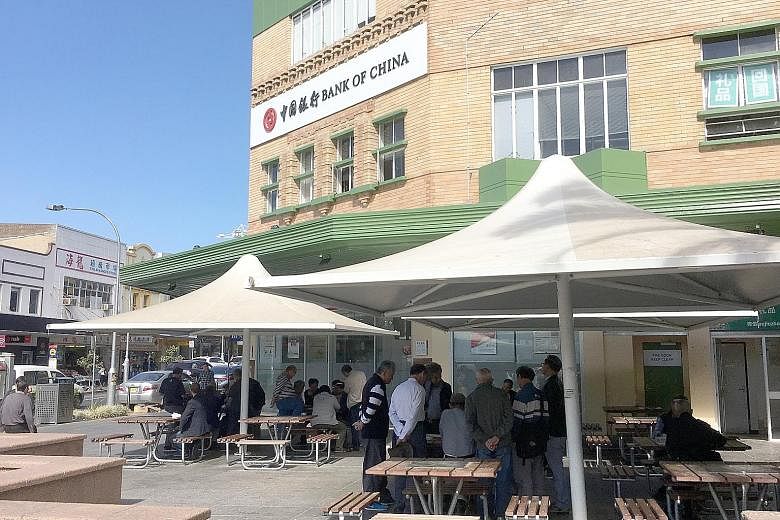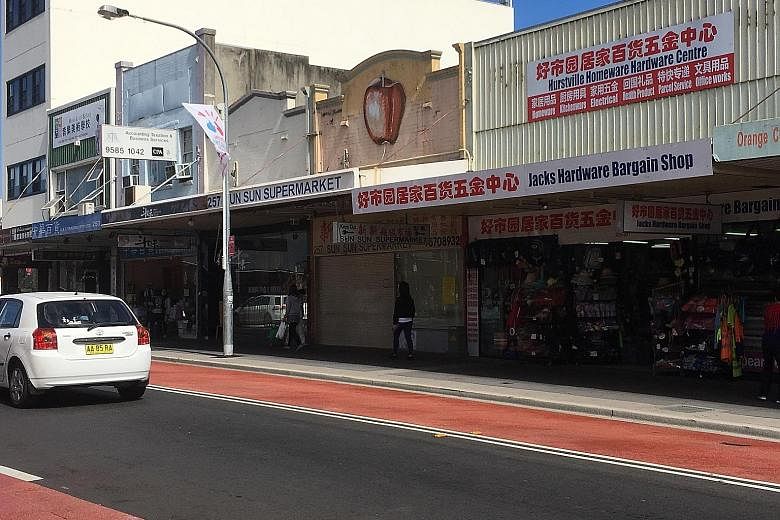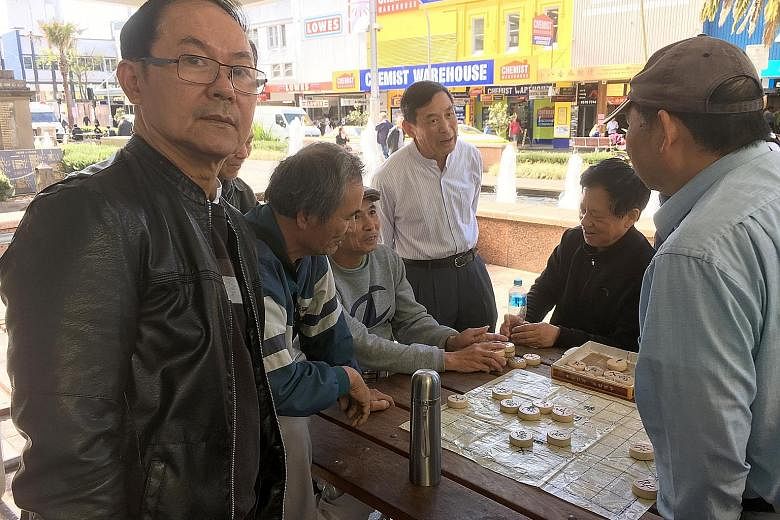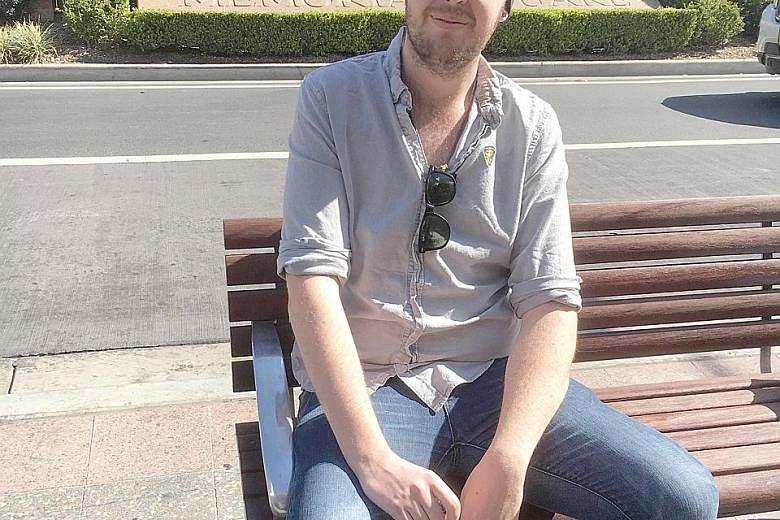Groups of men sit in front of a branch of the Bank of China on a weekday afternoon and huddle around fast-moving games of xiangqi, or Chinese chess.
Nearby, a series of Chinese noodle houses and barbecue restaurants adjoin a large Asian supermarket selling pastes, teas and oils sourced from across the region. Most customers as well as pedestrians making their way to the nearby train station speak Mandarin or Cantonese.
But this bustling shopping strip is not in Beijing or Hong Kong, but the Australian suburb of Hurstville, which is on the cusp of setting a historic first for Australia. The suburb, just 16km from the centre of Sydney, is set to become the first in Australia where the majority of the population are of Chinese origin.
According to the 2016 census, 49.4 per cent of Hurstville's 30,000-odd residents are of Chinese ancestry, compared with just 5 per cent who have Australian ancestry.
Forty-one per cent of the population were born in mainland China or Hong Kong, while 28 per cent were born in Australia, 7 per cent in Nepal and 2 per cent in Indonesia.
It is a remarkable change from just 15 years ago, when 22.7 per cent of Hurstville's population were born in China or Hong Kong, about half the percentage born in Australia.
Standing beside one of the xiangqi games in progress, Mr Danny Cheng, a 66-year-old originally from the southern Chinese city of Guangzhou, said he was attracted to Hurstville by its easy access to the airport and the city centre.
-
Nationwide effort to welcome all
-
Recent waves of immigration have led to remarkable changes in Australia's cultural mix, last year's national census showed.
Based on the survey, 26 per cent of Australians were born overseas, a proportion higher than other English-speaking nations such as the United States (14 per cent), Britain (13 per cent), and New Zealand (23 per cent).
Indian and Chinese immigrants are rapidly changing the country's cultural mix. Of 183,608 people offered permanent immigrant visas last year, 21 per cent were from India, 15 per cent were from China, and 9 per cent were from Britain, based on federal government data.
Chinese immigrants tend to be drawn to Sydney, Australia's largest city. The census found that the proportion of Chinese-born immigrants has overtaken those born in England and accounts for almost 5 per cent of the city's population of five million.
Indians, meanwhile, are the largest foreign-born group in the second-largest city of Melbourne, comprising almost 4 per cent of the city's 4.5 million people.
Professor Jock Collins, from the University of Technology Sydney, said successive Australian governments have helped to prevent social problems with an immigration programme that is non-discriminatory and "casts the net to all corners of the world".
In addition, local, state and federal governments have made a strong effort to ensure basic services such as health, education and welfare are easily accessible to people from diverse cultural and linguistic backgrounds.
Jonathan Pearlman
A former restaurant worker, Mr Cheng, who has three children, said he arrived in Sydney in 1970 and moved to Hurstville 11 years ago.
"Hurstville is a very good area," he told The Straits Times. "There are very good shops - clothes, vegetables and meat. And it is cheaper here than at other places."
CHINA, INDIA OVERTAKING BRITAIN AS IMMIGRANT SOURCE
Hurstville's broad mix of nationalities is increasingly the norm in this immigrant nation, particularly in the larger cities as the country absorbs a growing influx of citizens from across the globe.
So far, thankfully, these changes have been relatively trouble-free.
Sitting at a bus stop outside a Chinese restaurant, Mr Bryn Lundberg-Yates, a 26-year-old train driver, told The Straits Times he did not believe residents in the area were particularly fussed about the area's unusual cultural mix.
"Everyone gets along really well," he said.
"It's just the way certain parts of Sydney are. I'm sure some of the older people here might have a problem with it, but not the younger people. It's normal."
A short drive away from Hurstville, in the suburb of Harris Park, a similar story is unfolding but with a different ethnic group: Of the area's 6,000-odd residents, 46 per cent were born in India.
The evolving characters of Hurstville and Harris Park tell the story of Australia's changing ethnic mix, as China and India start to overtake Britain as the largest source of immigrants Down Under.
An expert on Australian immigration, Professor Jock Collins, from the University of Technology Sydney, said that Hurstville's majority Chinese-ancestry population is a first for the nation but he pointed out that the area still has a diverse cultural mix.
He said Australia has not tended to have "ghettoes" or highly concentrated immigrant areas, unlike British suburbs with high proportions of Pakistani, Indian or Caribbean residents, or Miami, in the United States, with its concentrations of Cuban-origin residents.
"In Australia, unlike many other countries, we don't have ghettoes where only one group dominates," he told The Straits Times.
"Even places such as Hurstville and Harris Park are cosmopolitan rather than mono-ethnic communities. So I don't think it is a thing to worry about - there has not been conflict or issues in those areas of high concentration."
Analysts say that so-called "chain migration" - in which immigrants from one location follow one another to a new community - remains common for the immigrant waves from countries such as China and India, as it has for previous waves from places such as Greece and Italy. But, over time, immigrants in Australia tend to disperse across the city.
An expert on ethnicity and multiculturalism in Australia, Professor Ien Ang, from Western Sydney University, said Sydney's Chinatown had historically been a "refuge" for Chinese immigrants during the decades of the country's "White Australia" policy, which aimed to prevent non-Europeans from immigrating. But, she told The Straits Times, the dismantling of this policy during the 1970s - and the shift towards a multicultural approach - had encouraged Chinese immigrants to spread across the city.
"Recent immigrants tend to move to areas where they find services for new immigrants or people from their own background as a support network," she said.
WELCOMING SKILLED IMMIGRANTS
Despite Australia having one of the world's harshest approaches to asylum seekers arriving by boat, the nation continues to welcome large influxes of skilled immigrants.
Prof Ang said that "the level of tolerance is quite high" in Australia but there were some low levels of racism towards Asian migrants. She noted that some immigrants have reported experiencing discrimination at workplaces or when seeking promotions.
"I think people in Australia have to increasingly get used to, say, having a Chinese doctor or dentist," she said. "I think the more highly educated people tend to be more capable of accepting people from different backgrounds. Less-educated people might feel threatened."
In Hurstville's busy Forest Road, Mr Lundberg-Yates said with a smile that he had "noticed differences in his behaviour" as a result of living in a Chinese-majority neighbourhood. "I give more deference to older people when they are talking. That's part of the culture here."




